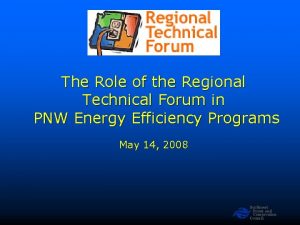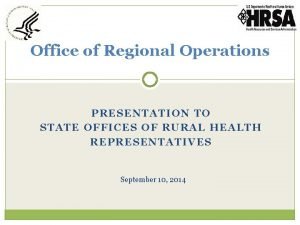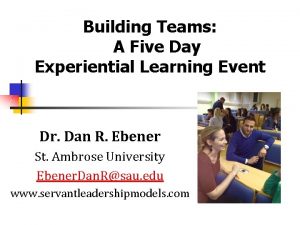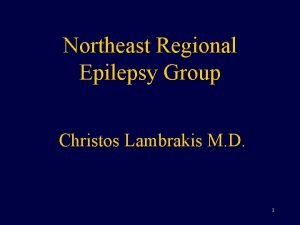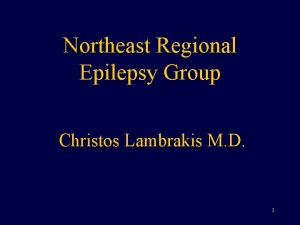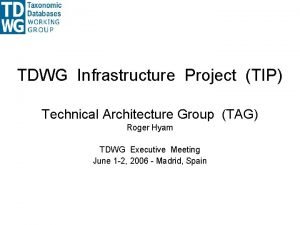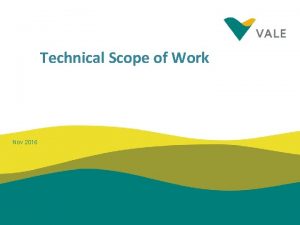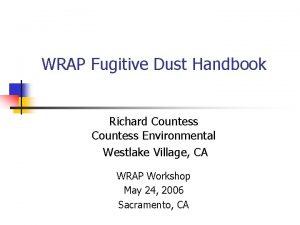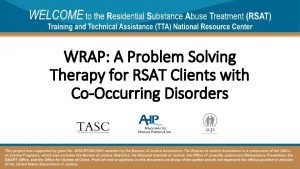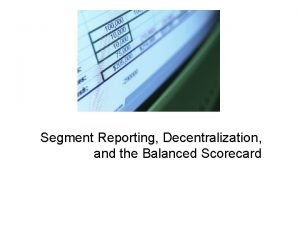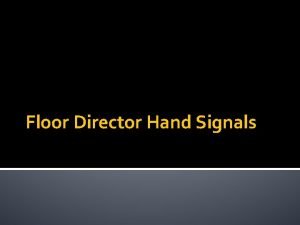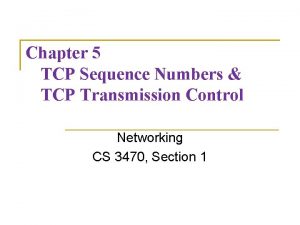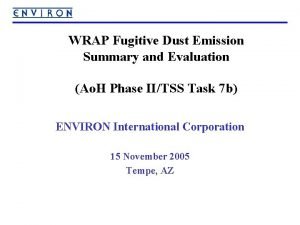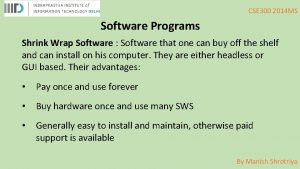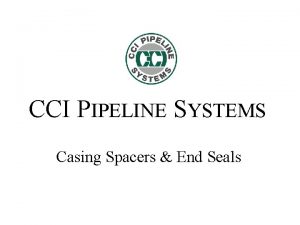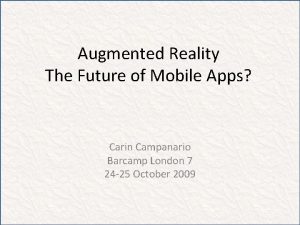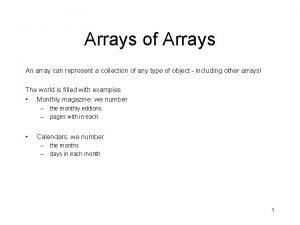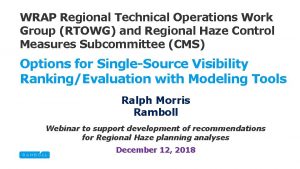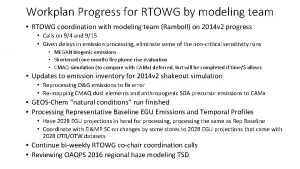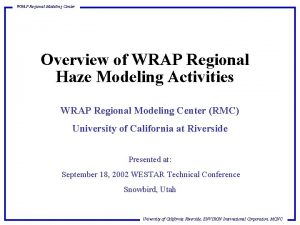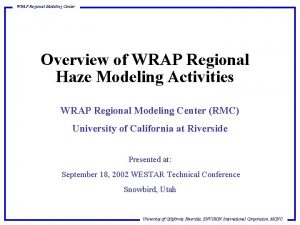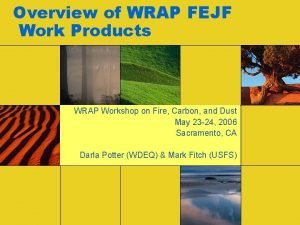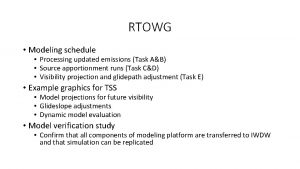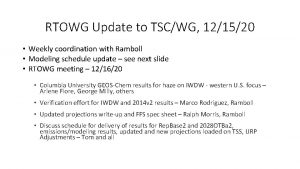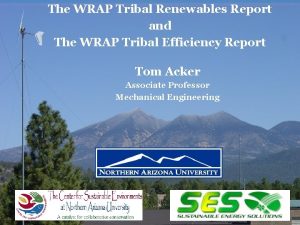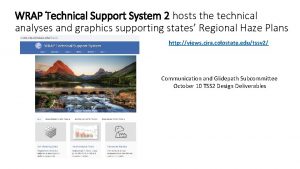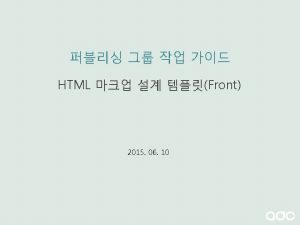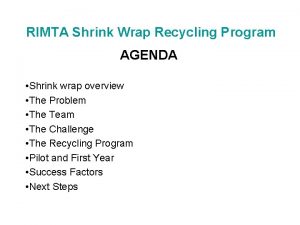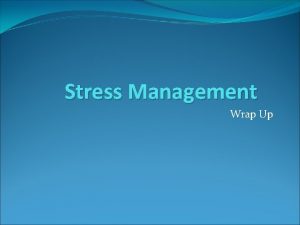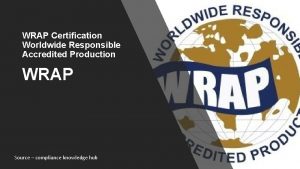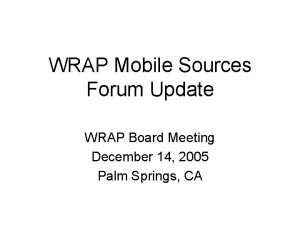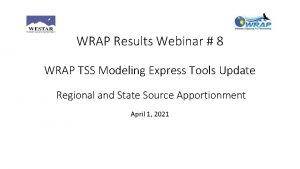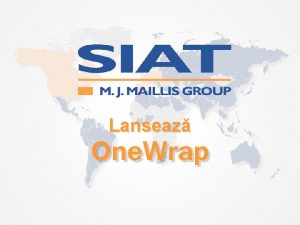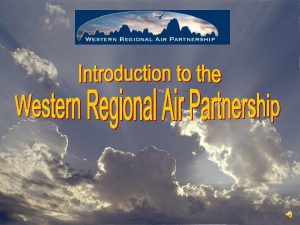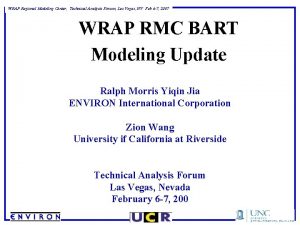WRAP Regional Technical Operations Work Group RTOWG and










![Use WEP [(Q/d) x EWRT] to Rank Sources Use WEP [(Q/d) x EWRT] to Rank Sources](https://slidetodoc.com/presentation_image/3d72d029c4d127929e0d093664ec4705/image-11.jpg)




















- Slides: 31

WRAP Regional Technical Operations Work Group (RTOWG) and Regional Haze Control Measures Subcommittee (CMS) Options for Single-Source Visibility Ranking/Evaluation with Modeling Tools Ralph Morris Ramboll Webinar to support development of recommendations for Regional Haze planning analyses December 12, 2018

BACKGROUND • States need to identify anthropogenic emission sources that most likely contribute to visibility impairment on the Most Impaired Days (MID) at a Class I Area (CIA) • Such sources are subjected to a Four-Factor Analysis to determine whether reasonable controls should be implemented as part of Reasonable Progress for the 2 nd Round of Regional Haze SIPs due in 2021 1. Costs of compliance 2. Time necessary for compliance 3. Energy and non-air quality environmental impacts of compliance 4. Remaining useful life

BACKGROUND – CONTROL MEASURES SUBCOMMITTEE (CMS) • Control Measures Subcommittee (CMS) of the WRAP Regional Haze Planning Work Group has prepared a draft “Reasonable Progress Source Identification and Analysis Protocol” to promote consistency among WRAP states in identifying sources subject to the Four-Factor Analysis o The number sources and level of emissions assessed by each state will vary, but a “reasonably large fraction” of emissions impacting extinction at each CIA should be assessed o The draft EPA guidance (2016) considers 80% to be a reasonably large fraction • Focus on anthropogenic sources of NOx, SOx and PM emissions o o States have good emissions information for these haze (Sulfate, Nitrate, PM) precursors EC and Fine Soil particles are generally not inventoried by most states OC mostly associated with wildfires or Secondary Organic Aerosols from biogenic sources States can include other pollutants for unique circumstances • CMS recommends three-step process for screening sources

BACKGROUND – CSM PROTOCOL THREE STEP PROCESS • Step 1 – Identify sources with 2014 emissions over 100 tpy of NOx, SOx and PM to determine the “Q” and measure distance “d” to nearest CIA o States have flexibility to choose a lower threshold than 100 tpy o Step 2 – Calculate Q/d for identified sources and determine whether the Q/d exceeds 10 o States have flexibility to adjust to a lower “Q/d” level if no sources are identified at 10 • Step 3 – Sources above the Q/d screening criteria should be evaluated using CIA specific WEP to confirm source impacts for the 20% MID o Some states needing more time to acquire source-specific information may need to identify/notify sources before the WEP analysis is completed • Identified sources would be reviewed for potential controls through a Four-Factor Analysis process.

SINGLE-SOURCE VISIBILITY ASSESSMENT APPROACHES • Screening Tools: Can be used to relatively rank source’s potential for visibility impairment at a Class I Area (CIA) o Q/d – Visibility Precursor Emissions divided by Distance to CIA o WEP/AOI – Weighted Emissions Potential/Area of Influence o CALPUFF – Lagrangian puff model with simplified chemistry • Quantitative Tools: Explicitly calculate visibility impairment at CIAs due to a source’s emissions o Source Apportionment, PSAT – Particulate Source Apportionment Technology (in CAMx Photochemical Grid Model, PGM) o Sensitivity Methods – Brute Force (BF) or Decoupled Direct Method (DDM) (CAMx/CMAQ PGMs) o SCICHEM – Second-order Closure Integrated Puff (SCIPUFF) model with CHEMistry § Stand alone Lagrangian Puff model – Think CALPUFF but with full chemistry like CAMx/CMAQ

Q/d – Visibility Precursor Emissions divided by Distance to CIA • Used in Federal Land Managers’ AQRV Work Group 2010 Report o For PSD/ Far-Field CIA AQRV Analysis, FLAG (2010) uses Q/d Screening Analysis o If Q/d < 10 and Source > 50 -km from CIA Source is assumed to not have a significant visibility (AQRV) impact at the CIA § Loosely based on CALPUFF modeling having visibility impact < 0. 5 dv o Q = SO 2 + NOx + PM 10 + H 2 SO 4 emissions in tons per year § Maximum 24 -hour permitted emission rates o d = distance between source and CIA (km) § FLAG (2010) screening just for sources > 50 -km from CIA https: //www. nature. nps. gov/air/Pubs/pdf/flag/FLAG_2010. pdf

Q/d – Visibility Precursor Emissions divided by Distance to CIA • Advantages: o Easy to apply o Involves information that states have readily available • Disadvantages: o Does not account for geographic transport path o No accounting for chemical conversion § Source Emissions (SO 2, NOx, PM 10, H 2 SO 4) o Not based on Most Impaired Days (MIDs) § Source and CIA locations o Should a Q/D threshold be used? o Can be used as a relative metric to rank sources for each CIA § [FLAG used Q/d > 10]

Area of Influence (AOI) / Weighted Emissions Potential (WEP) • HYSPLIT back trajectories from Class I Area (CIA) on 20% Most Impaired Days (MID) o For example, four times a day (0600, 1200, 1800, 2400 LST) at four different heights above the ground (100, 200, 500, 1, 000 m) o Provides a frequency of occurrence that an air parcel passing over a (i, j) grid cell arrives at a CIA on one of the 20% MID • Use recent AOI/WEP analysis conducted for Cen. SARA as an example o HYSPLIT Back Trajectories and IMPROVE 20% MID data for 2012 -2016 5 -year period o Example unrelated HYSPLIT Back Trajectory

Area of Influence (AOI) / Weighted Emissions Potential (WEP) • Area of Influenced (AOI) o Residence Time Analysis ( ): § Amount of time a back trajectory to a CIA on MIDs passes over a location is a measure that can be used to rank source’s potential for contributing to visibility impairment at a CIA on MIDs o Distance-Weighted Residence Time Analysis or Source Contribution Function (SCF)

Area of Influence (AOI) / Weighted Emissions Potential (WEP) • Weighted Emissions Potential (WEP) o Extinction Weighted Residence Time (EWRT): § Weight the HYSPLIT Residence Time Analysis by the Sulfate (Nitrate) Extinction on each MID o Weighted Emissions Potential (WEP): § For each SO 2 (NOx) source, weigh the SO 4 (NO 3) EWRTij by SO 2 (NOx) emissions divided by distance
![Use WEP Qd x EWRT to Rank Sources Use WEP [(Q/d) x EWRT] to Rank Sources](https://slidetodoc.com/presentation_image/3d72d029c4d127929e0d093664ec4705/image-11.jpg)
Use WEP [(Q/d) x EWRT] to Rank Sources

Area of Influence (AOI) / Weighted Emissions Potential (WEP) • Advantages: o Accounts for geography and transport paths to CIA on MIDs o SO 2 (NOx) sources weighted by MID’s SO 4 (NO 3) extinction o Less costly than PGM modeling • Disadvantages: o Uncertainties in HYSPLIT back trajectories o Does not account for chemical transformation o Difficult to compare rankings across different CIAs o Not quantitative o More costly than Q/d

CALPUFF: LAGRANGIAN NON-STEADY-STATE PUFF MODEL • CALPUFF tracks emissions from a source using a series of puffs that can overlap o Includes Reduced Form chemical transformation rates • CALPUFF used extensively in Round 1 Regional Haze SIPs o Screening tool for when a source is Subject-to-BART § Source’s visibility impact ≥ 0. 5 dv • 2003 EPA Modeling Guidelines (Appendix W): o EPA-preferred far-field (> 50 -km) model for inert pollutants § For example, SO 2, PM 2. 5 CIA PSD SILs/Increments • EPA January 17, 2017 Modeling Guidelines (App W): o Delist CALPUFF as EPA-preferred far-field model o EPA states that Chemical Transport Models (CTMs) with fullscience chemistry (e. g. , PGMS) should be used for single-source ozone and secondary PM impacts

POTENTIAL SOURCE SCREENING APPROACH USING CALPUFF • Use recent WRF data (e. g. , EPA’s 2011, 2014, 2015, 2016) and process using MMIF to generate 12 -km CALPUFF meteorological inputs • Prepare other CALPUFF inputs (e. g. , background ozone and ammonia). • Run CALPUFF for candidate sources and calculate daily visibility impacts at CIA o Determine source contributions on 20% MIDs and rank sources for conducting Four-Factor Analysis

CALPUFF SCREENING APPROACH • Advantages: o Accounts for geography and transport paths on MIDs o Can compare source impacts across CIAs o Less costly than PGMs o Semi-quantitative • Disadvantages: o More costly than AOI/WEP o Limited number of years with WRF data o Uncertainties in transport/dispersion o Reduced Form Chemistry o Not recommended by EPA for secondary PM

EPA RECOMMENDATIONS FOR SINGLE-SOURCE MODELING FOR SECONDARY PARTICULATE MATTER • EPA Current (Jan 2017) Modeling Guidelines (Appendix W): o Tier II explicit modeling “involves application of more sophisticated case-specific chemical transport models (CTMs) (e. g. , photochemical grid models)” § https: //www 3. epa. gov/ttn/scram/guidance/guide/appw_17. pdf • EPA Guidance for Single-Source Modeling of Secondary Pollutants (Dec 2016): o For Tier II use CTMs with photochemistry on case-by-case basis o PGMs are one type of CTM that would be acceptable if applied correctly § https: //www 3. epa. gov/ttn/scram/appendix_w/2016/EPA-454_R-16 -005. pdf • EPA Memo on Use of PGMS for Single-Source Ozone and Secondary PM 2. 5 (August 2017) o If applied correctly, CAMx and CMAQ would be acceptable models o https: //www 3. epa. gov/ttn/scram/guidance/clarification/20170804 Photochemical_Grid_Model_Clarification_Memo. pdf • Modeled Emission Rates for Precursors (MERPs) for ozone and secondary PM 2. 5 o Tier I screening tool for PSD ozone and secondary PM 2. 5 based on CAMx PSAT Source Apportionment § https: //www 3. epa. gov/ttn/scram/2018_RSL/Presentations/1 -21_2018_RSL-MERPs. pdf

QUANTATIVE TECHNIQUES FOR CALCULATING SINGLE-SOURCE VISIBILITY IMPACTS • Source Apportionment – PSAT: Particulate Source Apportionment Technology (PSAT) o PSAT available in the CAMx PGM o Provides user define sources PM contributions from which visibility impairment can be calculated o Visibility contributions for given set of atmospheric conditions (e. g. , 2011 or 2028 emissions) • Sensitivity Methods – BF & DDM: Brute Force (BF) & Decoupled Direct Method (DDM) o BF – Base Case and Source Zero-Out Emissions Scenario, difference is Source Contribution o DDM – Calculate sensitivity for user defined sources, can estimate Source Contributions § Sensitivity methods change the chemistry so are not true Source Apportionment, but are Prognostic • SCICHEM: Lagrangian puff model with full-science chemistry (like CAMx and CMAQ) o Simulate individual source or small group of sources using overlapping puffs o Background concentrations typically obtained by averaging results from CAMx or CMAQ PGM

PSAT – PARTICULATE SOURCE APPORTIONMENT TECHNOLOGY • Need CAMx PGM Modeling Database • User selects sources for which PM contributions are desired • PSAT uses reactive tracers (tagged species) that run in parallel to the host PGM to track the selected source emissions contributions o All sources must be tagged (e. g. , leftover group) so sum of all tagged sources adds up to total CAMx PM concentration • PSAT can invoke up to 4 families of tagged species: o (1) SO 4; (2) NO 3/NH 4; (3) Primary PM; and (4) SOA § SOA most expensive as must track numerous precursor (VOC), PM product (SOA) and intermediate (CG) species.

PSAT – PARTICULATE SOURCE APPORTIONMENT TECHNOLOGY • PSAT is compatible with CAMX Plume-in-Grid (Pi. G) treatment of point source plumes o Normally emissions from a point source are instantaneously dispersed across a grid cell (e. g. , 12 km x 12 -km) so fails to capture the near-source plume (e. g. , high NOx) chemistry o CAMx Pi. G tracks the near-source transport, dispersion and chemistry of a point source plume using a Lagrangian puff model. o When the size of the puffs are commensurate with a grid cell size, the mass from the puff is transferred to the CAMx grid model o The puffs from the subgrid-scale Pi. G module can be sampled using receptors

PSAT – PARTICULATE SOURCE APPORTIONMENT TECHNOLOGY • PSAT compatible with the CAMX Plume-in-Grid (Pi. G) module • Example CAMx results using 1 -km grid cell vs. 4 -km grid cell with Pi. G and sampling receptors CAMx 1 km grid CAMx 4 km grid + Pi. G 200 m sampling grid

PSAT – PARTICULATE SOURCE APPORTIONMENT TECHNOLOGY Example – VISTAS/ASIP individual contributions of 31 sources to PM 2. 5 concentrations (circa 2007 -2008):

PSAT – PARTICULATE SOURCE APPORTIONMENT TECHNOLOGY WRAP Western Air Quality Study (WAQS) CAMx 36/12 -km Source Apportionment • Round 1: Geographic Regions • Round 2: Source Sectors o Natural (Bio, LNOx, SS, WBD) o Wildfires (WF) o Rx+Ag Fires o O&G o EGU Point o Other Point o On-Road o Non-Road o Remainder Anthro

PSAT – PARTICULATE SOURCE APPORTIONMENT TECHNOLOGY • Advantages: o Provides quantitative visibility contribution to visibility impairment on 20% MID and all days o Consistent contribution metrics across CIAs o Cost-effective when analyzing contributions of multiple individual sources o Consistent with PGM visibility impacts and Reasonable Progress calculations o Consistent with EPA Modeling Guidelines • Disadvantages: o Requires CAMx PGM database o Can be computationally extensive when analyzing many sources o Typically only available for one year o Contributions for Emissions Scenario Simulated – other years may be different

SENSITIVITY METHODS – BF AND DDM • Brute Force (BF) o Can be used with CAMx, CMAQ or any Model o Conduct Base Case o Conduct Sensitivity Case o For example, single-source zero-out emissions scenario o Difference in concentrations is interpreted as a source contribution • Decoupled Direct Method (DDM) o Instrumented in CAMx and CMAQ o User defines parameters for DDM sensitivity analysis o Works similar to PSAT for emissions o Obtain PM concentration sensitivities to emissions (dc/de) o Post-process to get source contributions

SENSITIVITY METHODS – BF AND DDM Brute Force (BF) Decoupled Direct Method (DDM) • Advantages: o Quantitative, can compare across CIAs o Easy to implement and explain o Can get multiple source contributions in single run o Cost effective for one or not very many sources o Can be used with any model (CAMX/CMAQ) o Consistent with EPA Modeling Guidelines • Disadvantages: o Implemented in CAMx and CMAQ o Consistent with EPA Modeling Guidelines • Disadvantages: o Requires PGM database o Sensitivity, not true source contributions o Can be costly for multiple sources o Is resource intensive (much more than PSAT) o Sensitivity, not true source contributions o Difficult to explain and interpret

SCICHEM – LAGRANGIAN PUFF MODEL WITH CHEMISTRY A Lagrangian puff dispersion model (think CALPUFF dispersion) with full chemistry (think CAMx and CMAQ chemistry) o SCICHEM v 3. 1/v 3. 2 is a stand alone model o Includes visibility post-processor to get single-source visibility impacts Can be used to model impacts of a single source or a small number of sources to ozone and PM 2. 5 Model dispersion evaluated for tracer studies and AERMOD databases Dispersion and chemistry evaluated against aircraft measurements of reactive plumes from power plants and petrochemical facilities Requires less computing power and setup time for single source applications compared to Photochemical Grid Models (PGMs) Runs on Windows 7 and Windows 10 (or Linux)

SCICHEM – LAGRANGIAN PUFF MODEL WITH CHEMISTRY • Plume represented as a succession of 3 -D Gaussian puffs • State-of-the-science puff dispersion based on SCIPUFF (Second Order Closure Integrated Puff Model) • Complex photochemistry similar to CMAQ and CAMx • Chemistry on overlapping puffs to correctly account for interaction among puffs and with background-allows treatment of non-linear chemistry • Suitable for both short-range and long-range transport applications

SCICHEM – LAGRANGIAN PUFF MODEL WITH CHEMISTRY • Data Needs: o Meteorology – typically WRF annual hourly 3 -D o Source emissions and stack characteristics – like AERMOD/CALPUFF o Background concentrations -- plume chemistry in SCICHEM dependent on specified chemical environment into which emissions are released • SCICHEM v 3. 1 release package includes regional diurnally and vertically varying monthly background chemistry files: o By state (sub-state level for larger states like CA and TX) o Obtained from a CAMx 2011 12 -km resolution CONUS simulation § • Could easily generate background for 2028 atmospheric conditions if 2028 CAMx or CMAQ output is available SCCHEM v 3. 2 annual long-range-transport (e. g. , CIA AQRV) simulation takes approximately a week using a single CPU core

SCICHEM – LAGRANGIAN PUFF MODEL WITH CHEMISTRY • Advantages: • Disadvantages: o Consistent with EPA Modeling Guidelines o New modeling system o Cost-effective for single-source impacts or for a few sources o No MPI/Open. MP multi-processing capability o Can run on Windows or Linux o PGM modeling expertise and Linux Clusters not needed § Single-source runs take ~week § Multiple sources longer o Some expertise may be needed o Potential inconsistencies with PGM impacts

DISCUSSION – SINGLE-SOURCE VISIBILITY MODELING • Screening Tools: o Q/d is easy to do, but should be done consistently across western U. S. region o AOI/WEP analysis would likely provide a better screening tool as it is tied to a CIA’s MIDs, but likely requires contractor support § Cen. SARA AOI/WEP analysis cost ~$42 K, expect WRAP to be the same even with many more CIAs because scripts and approach already set-up o Not sure what benefits CALPUFF brings over other tools • Quantitative Tools: o Sensitivity methods least attractive given many sources need to be analyzed (BF out) and DDM is costly to use and difficult to interpret o PSAT vs. SCICHEM would both be viable quantitative approaches § PSAT likely require contractor support and consistent with 2028 Reasonable Progress modeling § SCICHEM could be set-up on IWDW servers for states to run

FURTHER DISCUSSION
 Daily activities work immersion
Daily activities work immersion Regional technical forum
Regional technical forum Hrsa regional offices
Hrsa regional offices Reciprocal model of social group work
Reciprocal model of social group work Work group vs work team
Work group vs work team Smart work vs hard work group discussion
Smart work vs hard work group discussion Ne regional epilepsy group
Ne regional epilepsy group Northeast regional epilepsy
Northeast regional epilepsy Xl spikes on eeg
Xl spikes on eeg Chapter 4 work and energy section 1 work and machines
Chapter 4 work and energy section 1 work and machines Technical architecture group
Technical architecture group Technical scope document
Technical scope document What are the technical codes
What are the technical codes Wrist tape job
Wrist tape job Wrap fugitive dust handbook
Wrap fugitive dust handbook Wrap crisis plan examples
Wrap crisis plan examples Mwrap contractor portal
Mwrap contractor portal Segment reporting and decentralization
Segment reporting and decentralization Wrap it up hand signal
Wrap it up hand signal Tcp sequence number
Tcp sequence number Milady chapter 20 test
Milady chapter 20 test The body paragraph contain
The body paragraph contain Wrap fugitive dust handbook
Wrap fugitive dust handbook Wrap assessment
Wrap assessment Lecture on healthy lifestyle
Lecture on healthy lifestyle Daily maintenance plan wrap
Daily maintenance plan wrap Css wrap-flow
Css wrap-flow Shrink wrap software
Shrink wrap software Milady chapter 27 review questions
Milady chapter 27 review questions Casing spacers and end seals
Casing spacers and end seals Vuzix wrap 280
Vuzix wrap 280 Magic square wrap around array java
Magic square wrap around array java

